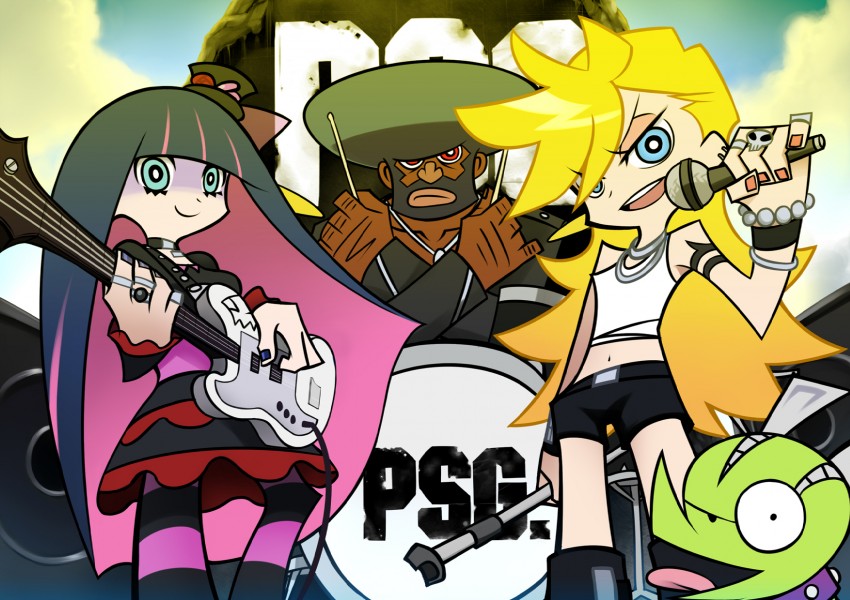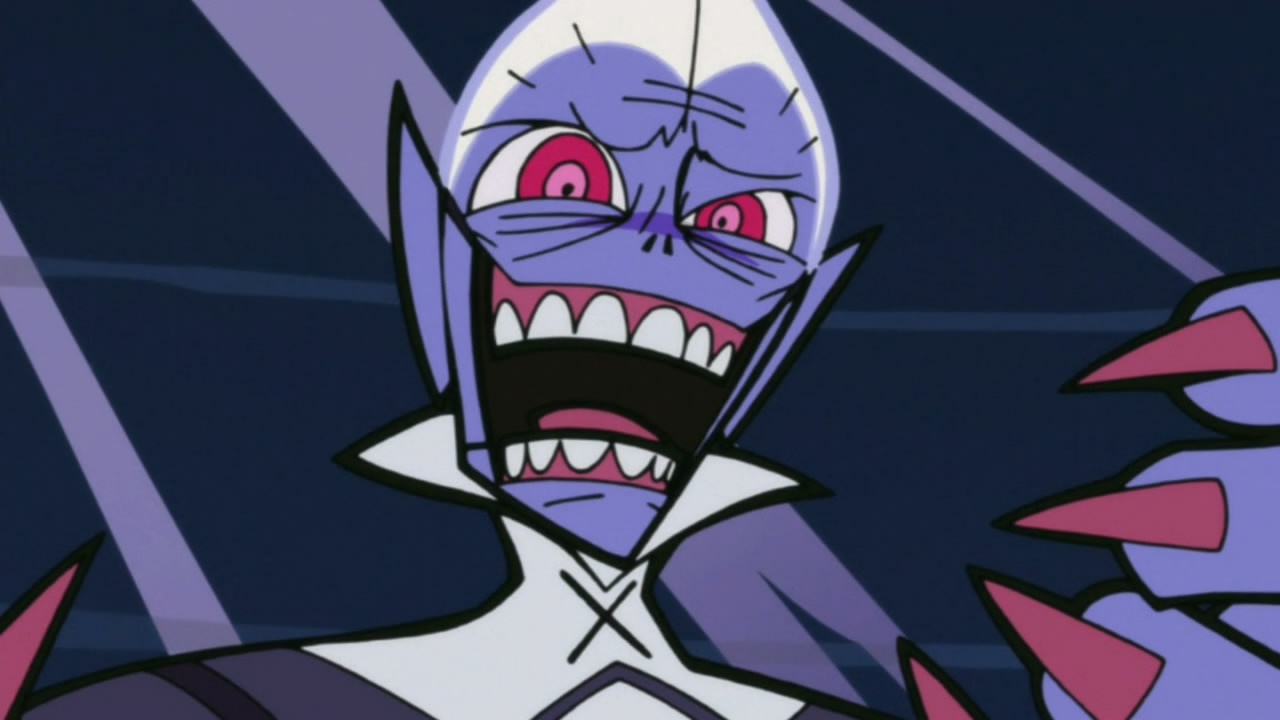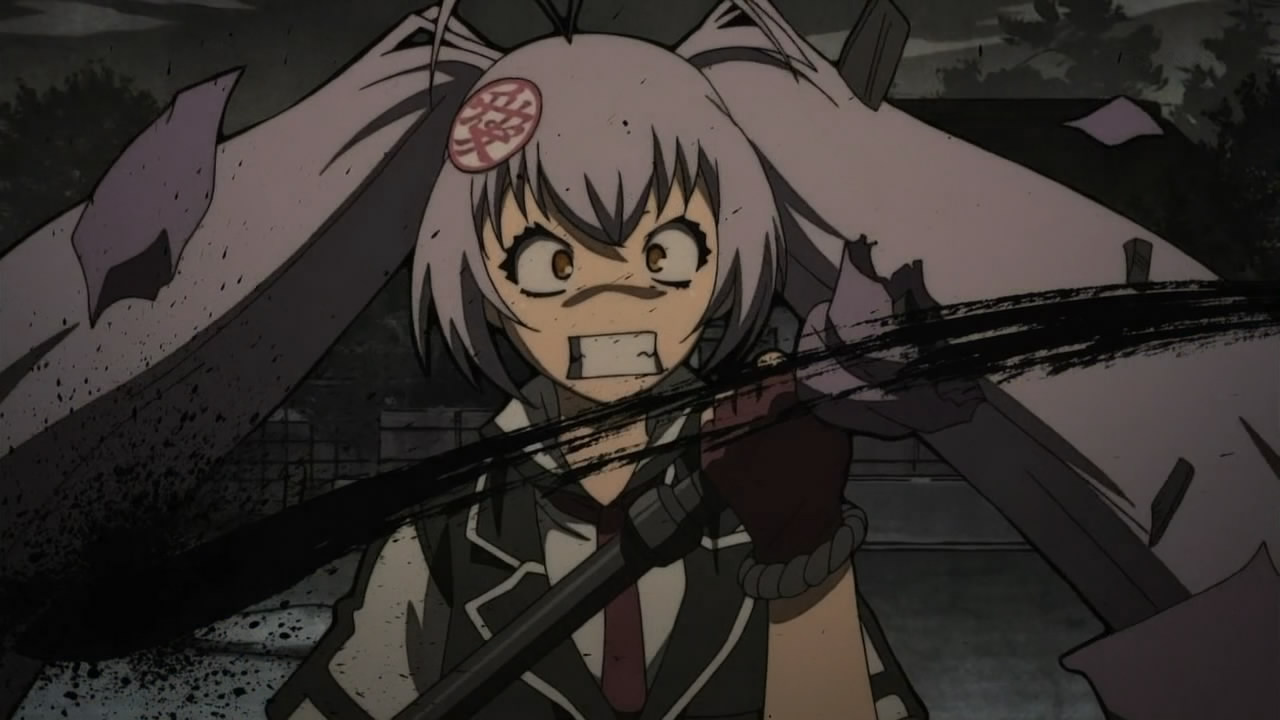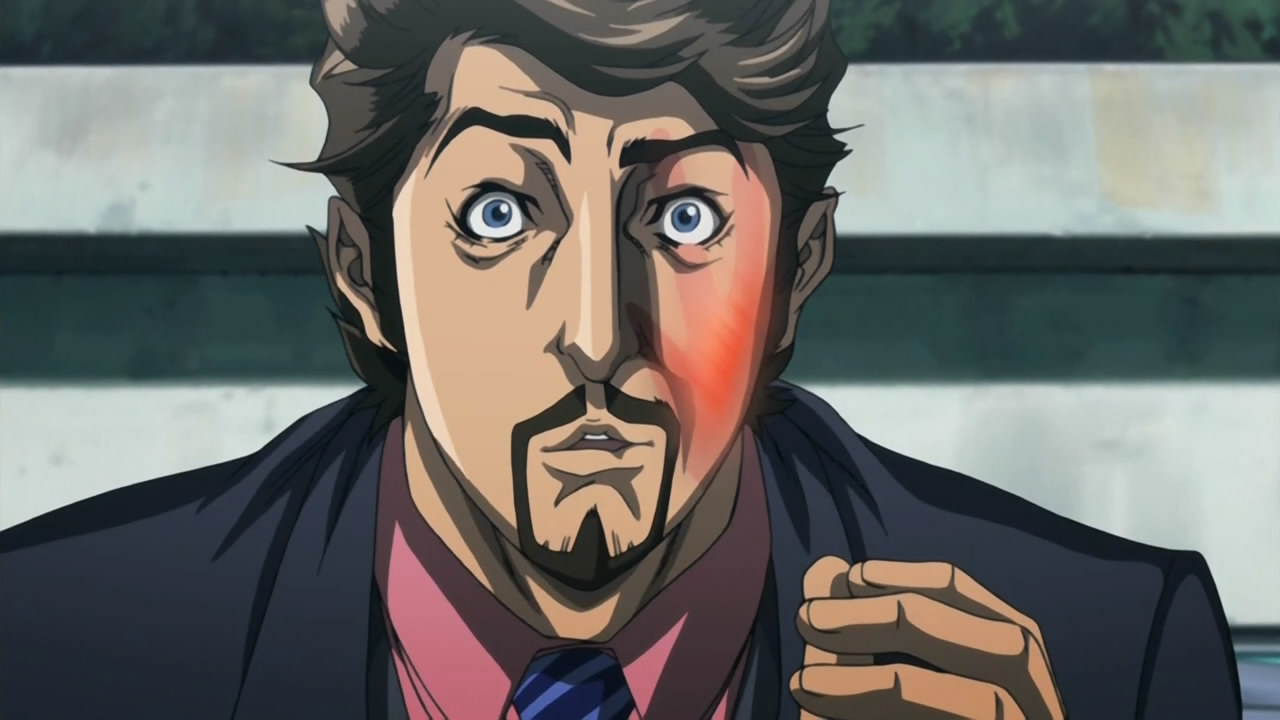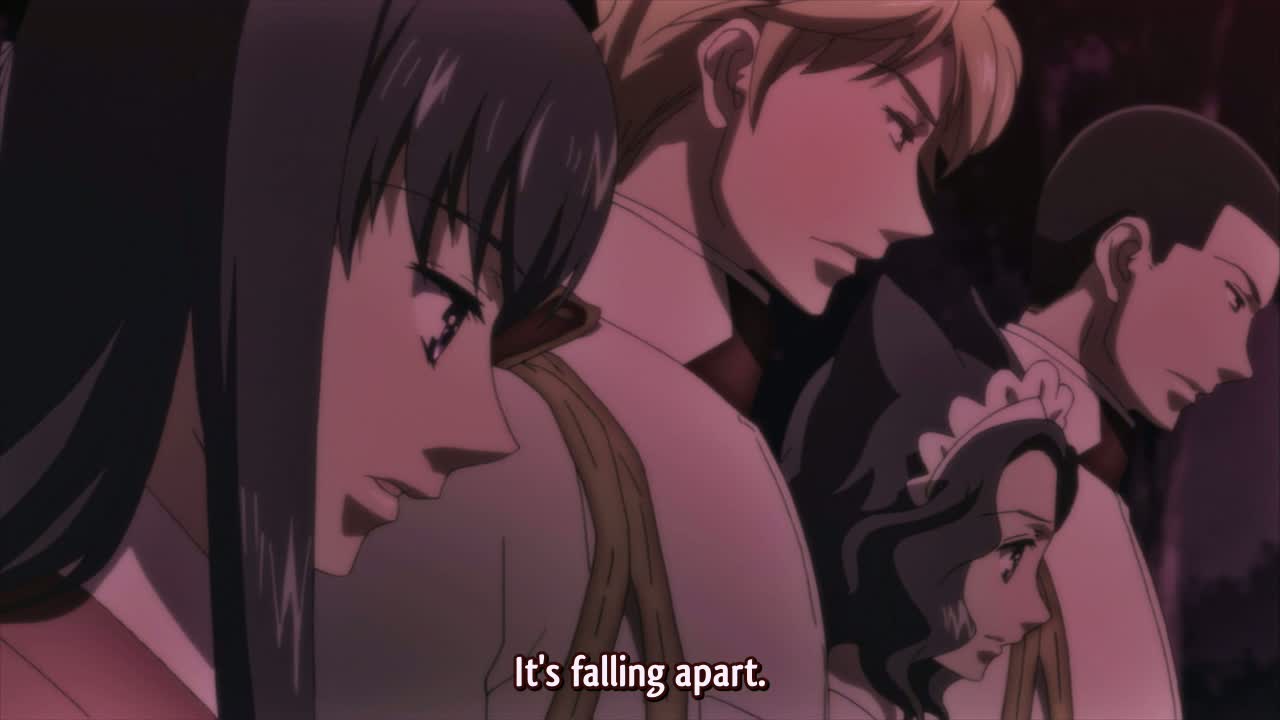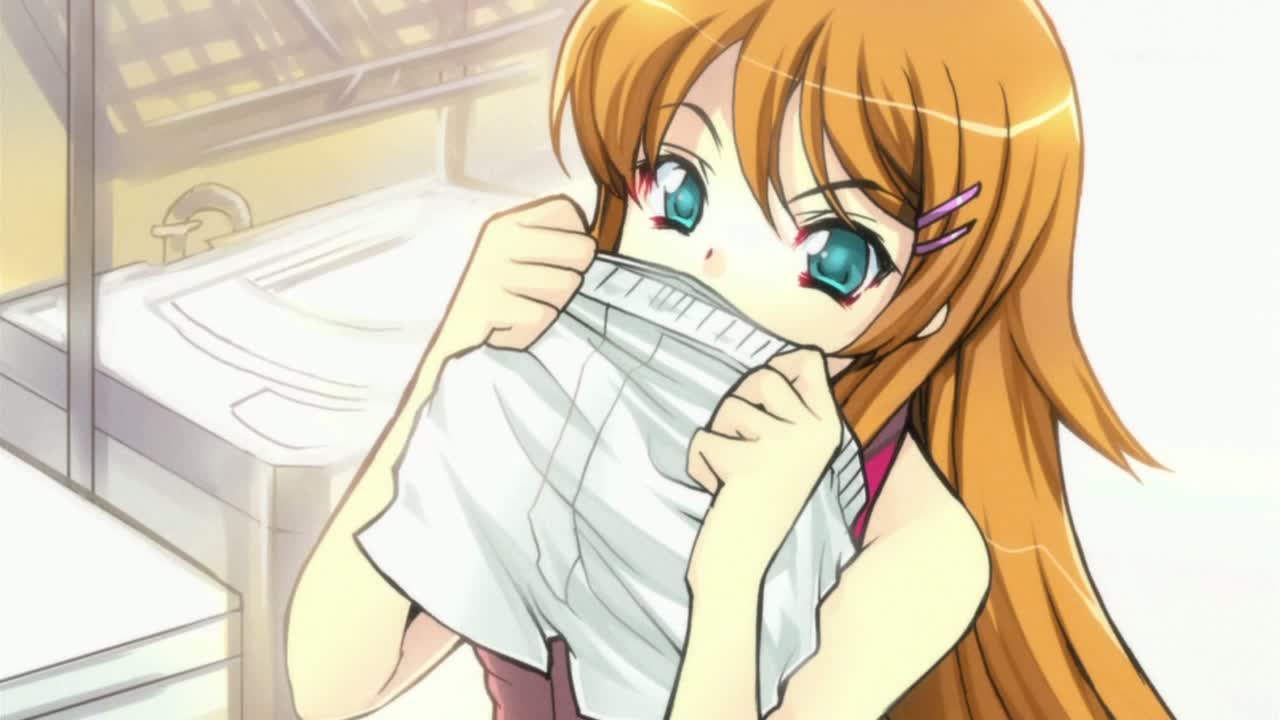Well, this season of anime was certainly a pleasant surprise. After the lackluster summer season, everyone at Project Haruhi felt that our prospects for the fall weren’t all that great. Fortunately, a few standout series managed to rise above the typical fare and keep us entertained. Foremost among them was Squid Girl, which we all agree was the best show of the season. Sadly, that’s pretty much the ONLY thing we agreed on.
While recording our weekly reviews on Bakacast, a number of disagreements sprung up. Dusty and Glen are huge fans of Star Driver, whereas I found it too boring to watch past four episodes. Alternatively, I’ve been quite the Panty & Stocking apologist, but Glen and Dusty find it marginally entertaining at best. And we all enjoyed hating on OreImo, one of the most reviled shows of the season… except for Glen, who actually enjoyed it quite a bit. Even our opinions of Iron Man tended to vary.
For the purposes of these reviews, I’ve tried to assign each show to the person who enjoyed it the most. The exceptions are Samurai Girls, which NOBODY liked, and Iron Man, which Dusty gets because he’s our resident comic book nerd. Hopefully, that will make these reviews more than just one unending stream of negativity. No promises, though.
Our in-depth reviews are below the break. Beware the sacrilege! Oh, and the spoilers too.
Jon
Panty & Stocking with Garterbelt
“I’m not sure what I was expecting, but that wasn’t it.”
–Random 4channer
Most storytellers will be happy to simply subvert your expectations. Gainax likes to take those expectations, utterly destroy them, twist their corpses beyond recognition, urinate on their graves, then dig them up and reanimate them into something completely alien and unrecognizable. For that reason, nobody was quite sure what to think of Panty & Stocking at first.
When the content of the show became clear after the first episode (i.e. Invader Zim meets South Park), the criticism started rolling in. The main problem was the one-note humor; endless barrages of sex jokes and double-entendres can be funny, but only if done with some degree of comedic timing and variety. Gainax opted for the rapid-fire approach, throwing as many jokes as possible at the viewer in between the warp-speed action scenes. The end result, although spectacular to behold, was still rather polarizing. Some viewers, like myself, thought the show managed to take successful refuge in audacity, out-pacing it’s subpar humor with it’s over-the-top action and storytelling. Others, like Dustin, felt that the flaws were just too significant to ignore.
That is, until episode six struck.
I’ve already written at length about how the Demon Sisters transformed Panty & Stocking. With the addition of a story, absurd as it was, the show finally found its footing and a broader appeal among its previous detractors. The common wisdom became “PSG got good at episode six.” While I don’t deny there was a definite spike in quality, I don’t think it was significant enough to justify people’s wildly varying opinions of the first and second halves.
You see, PSG was supposed to be an absurdist, Pythonesque show. Like FLCL, it opted to be as crazy, funny and utterly insane as possible. Even the “story” was just an excuse for more craziness. As such, I feel any attempt to criticize the story for not adhering to good writing practices or narrative conventions is somewhat pointless. How can you try to find logic in something that strives to be nonsensical? It’s like trying to analyze the literary depth of Samurai Girls.
Epic-tier internet troll The Spoony One once created a joke character known as Doctor Insano. When asked about Insano’s wildy contradictory backstory, he remarked, “There is no continuity. There is only Insano.” I think that statement also applies to PSG. This was a show conceived by a team of creatively insane artists, under the influence of excessive amounts of alcohol, with the aim of being as offensive and nonsensical as possible. If you can enjoy the absurdity and overlook the flaws (which are distracting but not severe), you’ll enjoy this show immensely. Otherwise, I suggest you try out this season’s more conventional but equally hilarious comedy, Squid Girl.
Oh, and the soundtrack? Godly.
Rating: 4 out of 5
Samurai Girls
Although I love shows that destroy your expectations, I’m also perfectly happy with ones that adhere to well-worn tropes and cliches. For example, Titan A.E. is a movie that used every trick in the book, from the monomyth to the heel face turn. But, despite being a total clichefest, it still managed to be entertaining. It implemented those cliches WELL.
Samurai Girls, on the other hand, did not.
The concept is certainly interesting, not to mention marketable. Re-imagining Japan’s most famous historic samurai as busty, scantily-clad schoolgirls? An art style resembling an animated ink-and-wash painting? A story that mixes feudal-era drama with harem comedy? This sounds like a guaranteed winner.
Sadly, it faltered on execution. The harem comedy bits, although occasionally funny, usually only highlighted the annoying personalities of each character. The only thing that made the show tolerable, besides the unique art and cornucopia of boobs, was the snippets of plot hinting at some sort of conspiracy. What was this great shadow threatening Japan? I must know! But when the big reveal came, it exposed the truly horrid quality of this show’s writing. The Exposition Shogun… er, I mean Tokugawa Shogun gives us a long speech about how a great demon called Amakusomething is threatening to break his seal and do evil stuff.
Yeah, that’s it. Demon guy’s gonna break his seal. That’s the big threat.
I know the whole “ancient sealed evil” thing is a tried-and-true plotline, but Samurai Girls does a horrible job of implementing it. We never SEE this great evil (even in flashback) or hear him ominously plotting to escape. All we have is secondhand information, revealed to us by the Shogun during his exposition dumps. As such, the main villain never even shows up. He’s entirely faceless, nonthreatening and impotent.
And there’s Samurai Girls, summarized in one word: impotent. Nothing has any lasting impact. We get a neverending stream of boob-groping, friendship speeches and heroic sacrifices, but it has no meaning because we just don’t care about the characters. This is a shoddy, emotionless mess designed solely to sell merchandise. The creators put no effort into this show, so I see no reason to put further effort into reviewing it. Unless you’re looking for an unintentional comedy to the tune of Battlefield Earth, stay the hell away from this trainwreck.
Rating: 1 out of 5
Dustin
Iron Man
Defense Minister Kuroda is beating the circuits out of Tony Stark’s Iron Man suit. Meanwhile, as she bleeds to death, Dr. Tanaka prepares to transfer her consciousness into the Arc Reactor’s security system to transmit its power to Tony. She hits the final keystroke, satellites align, and Tony intercepts the energy beam to make Iron Man go Super Saiyan. Two energy blasts meet, and the villain is vaporized.
And thus Iron Man ends, not with a bang but a fizzle. The first episode of this show gave me hope. The animation was decent (even if the CG Iron Man looked terrible), the pacing was good, the new characters were interesting, and the writers seemed to understand who Tony Stark is. Unfortunately, that didn’t last. As the story became more absurd, the animation quality slipped, and Tony stopped acting like…well…Tony; this was not at all what I expected.
Maybe part of the problem is my own comic fandom. Because of the shifting creative teams that make up the modern comics scene, fans of a particular character tend to have their favorite teams. These people are who we think “get” what a character is all about. For me, Grant Morrison and Paul Dini are my favorite Batman writers. Justin Gray, Jimmy Palmiotti and Amanda Conner comprise my favorite Power Girl creative team. And for Iron Man, my writer is Matt Fraction.
Anime Tony Stark is something different. For one thing, he’s not proactive. He gets beat up and wanders around while he waits for other people to do all the work for him. He’s also definitely not a genius. So many important things just whiz right past his head. In the last episode, for example, he hears one of Gemini—er…Tanaka’s tentacle weapons impact, but he clearly doesn’t feel it. The question that immediately entered my head was, “So what did it hit?” Tony, however, doesn’t seem to think of this, considering how surprised he is to find out Tanaka stabbed herself. At least the writers occasionally showed off Tony’s resourcefulness, but he didn’t really win most of the battles; a lot of the credit goes to other characters who gave him viable strategies to replace his default response of “try punching it HARDER.”
Tony wasn’t the only disappointment. The animation was a pretty lackluster, too. Highschool of the Dead may have been terrible, but at least it looked nice. Iron Man just looks low-budget. The CG Iron Man suit is an eyesore, they often don’t bother trying to animate facial expressions (so everyone has two modes: stoic and surprised), some of the major plot developments don’t make any sense, at least two episodes were completely pointless, the villain they tried to keep secret was totally obvious from the third episode onward, and the political points they tried to make were often too simplistic and disingenuous. In other words, the show was a mess.
But was it terrible? Sometimes. But other times it was actually good. And other times it was simply mediocre. Iron Man is ultimately a very inconsistent series that doesn’t do an adequate job of introducing the character to a new audience or pleasing Tony’s current audience.
Rating: 2 out of 5
Glen
Otome Youkai Zakuro
Otome Youkai Zakuro had one of the strongest starts out of the shows I followed last season. It had an interesting alternate historical setting, strong characterization and good writing that somehow managed to juggle many different plot threads and character relationships gracefully. The premise of a joint government agency between military personnel and civillian youkai to mediate disputes between the two peoples was also interesting and promising. It’s said that the magic can’t last forever, and that’s true for any good concept. In Zakuro’s case, however, the magic didn’t even last long enough for the show to end.
In the first few episodes, the historical setting is established with some banter regarding the adoption of a new calender (Japan adopted the Gregorian calendar in 1871) and the opening of a new railway system (1872). The sudden and rapid westernization of Japan is the primary focus of the characters and the story for the early episode as they deal with displaced spirits and a strange new drink called ‘milk.’ This set the stage for some interesting observations and metaphors for mutual cultural understanding that are still as relevant now as ever. The animation and voice acting was wonderful and remained consistently so up to the end.
Around halfway through the series, however, problems began to develop. The episodes began oscillating from being well-written one week to the writers seemingly going on vacation the next. Episodes like the trip to Agemaki’s house and the Kokkuri wasted our time and served little or no purpose in developing characters or furthering the plot. Even the historical setting became ambiguous when Hanadate was shown getting out of a Ford Model A (introduced in 1927). Unfortunately, the writing never managed to recover for the ending. Many moments fell flat due to poor execution, horrible dialogue and even unusually stupid behavior on part of the characters. The only elements of the ending that worked at all were Byakuroku, Daidai and the Black Widow who, ironically, were some of the less developed characters.
Otome Youkai Zakuro had great setup and a great start. I was excited for some Meiji-era ghostbusting with some quirky romance on the side. However, even the great setup feels hollow without the payoff of an equally great or even decent conclusion. You may be satisfied if you’re in this purely for the romance angle, but after everything else that was promised I can’t help but be disappointed.
Rating: 3 out of 5
My Little Sister Can’t be This Cute!
Look at that title. Really look at it. At first, I was going to deliberately ignore this show. It was so blatantly trying to be pandering otaku bait that it even felt the need to point out its intended appeal in the title. However, I decided that I should at least step up to the plate if I already knew that the show would be pitching underhand. Even if the show was terrible, at least I’d have fun blasting it in a review. Surprisingly, it became apparent in the first episode that I wasn’t the one who would be hitting a home run off this.
The writing in first half of OreImo is very good. Snappy dialogue, endearing characters, and a great sense of humor really makes it a joy to watch. The distinct and attractive character designs and the above-average animation for a slice-of-life show also make it easy on the eyes. An all-star cast rounds off the great production. In one scene, Ayana Taketatsu (Kirino) rambles on excitedly for almost two minutes straight without a break or a drop in enthusiasm, which I thought was impressive. While the series does focus a lot on otaku culture, most jokes and conversations are still accessible to people who don’t understand the references.
Unfortunately, the show begins to stumble around later on. The episodes featuring Kirino’s anime and her birthday present had questionable relevance to the relationship between Kyousuke and Kirino and attempted to overstretch thin concepts. While I did appreciate their deconstructions of the otaku entitlement complex and the duplicity of idols, creating entire episodes around them spread the premise too thin. Kirino’s big apology lacked proper setup, but at least managed to not fall flat. While Kirino’s character does grow and mature a little between the beginning and end of the series, it’s difficult to pin down exactly where the changes begin, which unfortunately affects the believability.
Overall, OreImo was highly enjoyable despite its flaws. It has great writing and a lot of great characters. However, many people will find Kirino’s behavior insufferable and inexusable and may have trouble believing that she can manage to keep anyone on her side. While I found it a bit of a stretch sometimes, it never rang false to me. I have a younger sister of my own, and while she was never as demanding and spoiled as Kirino, I can still understand the feeling of wanting to help someone who doesn’t always appreciate it. If you can’t relate to that or you have a problem with unlikable characters, you’ll probably have trouble enjoying some of the more Kirino-centric episodes. I think I speak for everyone when I say Manami should be the main character for a second season.
Rating: 4 out of 5

